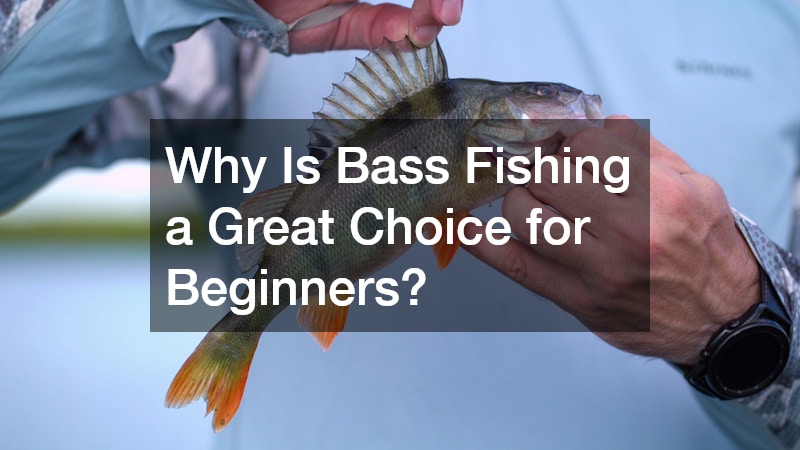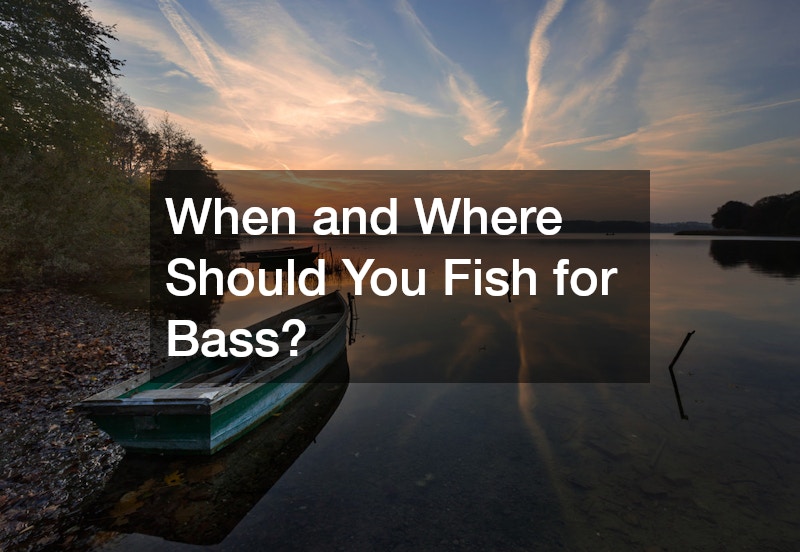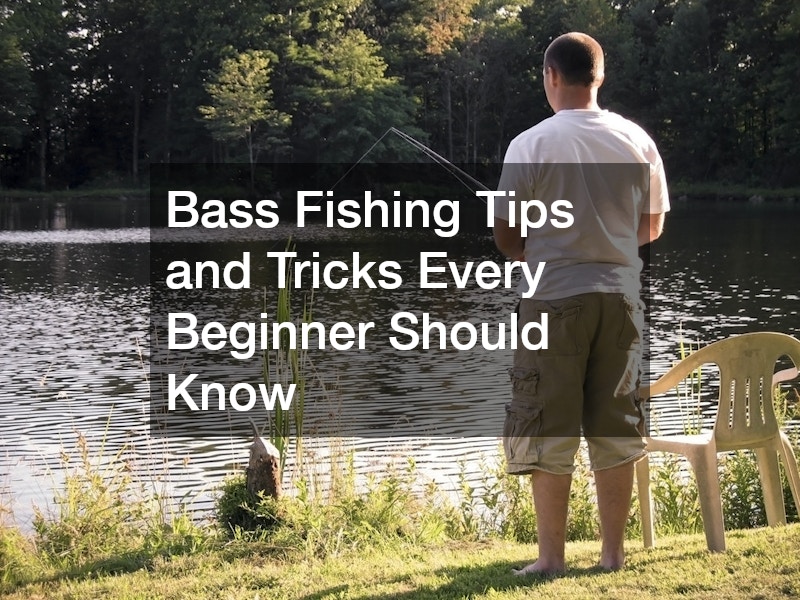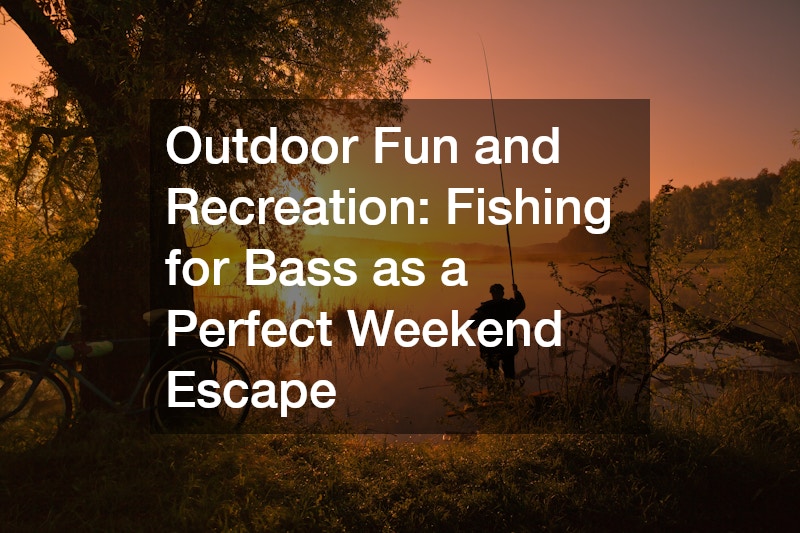
Fishing for bass isn’t just a relaxing pastime; it’s a thrilling outdoor adventure that brings nature lovers closer to the water and the wild. For beginners, learning how to fish for bass can seem overwhelming at first. With so many techniques, lures, and locations to consider, where do you even begin?
This guide provides straightforward, easy-to-follow bass fishing tips and tricks that will help you get started confidently and make your first few outings both fun and successful.
Why Is Bass Fishing a Great Choice for Beginners?

Bass are one of the most popular freshwater game fish in North America—and for good reason. They’re widely available in lakes, rivers, and ponds, they put up a good fight when hooked, and they’re active throughout much of the year. Whether you’re casting from shore or a boat, fishing for bass offers an accessible and exciting entry point into the world of angling.
The best part? Bass are not particularly elusive if you know the right tactics. Learning how bass behave and what attracts them is the foundation for catching your first fish. Here’s what every beginner needs to know to get started.
What Gear Do You Really Need to Start Bass Fishing?
Starting bass fishing doesn’t require the most expensive gear on the market. In fact, many beginners overcomplicate things by purchasing too much too soon. Here’s a basic setup that gets the job done without breaking the bank:
Essential beginner gear:
- Spinning rod and reel: Ideal for beginners due to ease of use and versatility.
- Monofilament fishing line (6–12 lb test): Easy to manage and good for most bass conditions.
- Soft plastic lures: Worms, grubs, and creature baits are effective and forgiving.
- Hooks and weights: Use wide gap hooks and bullet weights for basic Texas rigs.
- Tackle box and pliers: To keep things organized and help remove hooks safely.
You’ll also need a fishing license (check local regulations), a hat, sunglasses, and sunscreen for sun protection. Once you’re familiar with the basics, you can explore more advanced gear like baitcasting reels and high-performance rods.
When and Where Should You Fish for Bass?

Bass behavior changes depending on the season, weather, and time of day. Understanding these patterns is crucial for beginners trying to improve their chances of success.
Best times to fish for bass:
- Early morning (sunrise to 9 AM) and late afternoon (4 PM to sunset) are generally the most productive.
- Spring and fall are ideal seasons when bass are more active and feeding heavily.
Where to find bass:
- Shallow waters near structure: Bass love hiding near logs, rocks, docks, weed beds, and drop-offs.
- Warm, calm areas: In colder months, look for bass in deeper, warmer pockets of water.
If you’re fishing from shore, cast parallel to the shoreline or near underwater structures. If you’re in a boat, vary your depth and location until you locate an active zone.
Bass Fishing Tips and Tricks Every Beginner Should Know
Fishing for bass successfully involves more than casting a line. It’s about knowing how to think like a bass and using techniques that trigger their instincts. Here are the most useful bass fishing tips and tricks for beginners:
- Match your lure to the environment
- In clear water, use natural-colored baits (green, brown).
- In murky water, use bright or dark lures for visibility (chartreuse, black, red).
- Use the right retrieval technique
- For soft plastics, try a slow and steady retrieve with occasional twitches.
- For crankbaits, use a stop-and-go motion to mimic distressed baitfish.
- Don’t be afraid to experiment
- Switch lures if you haven’t had a bite in 20–30 minutes.
- Vary your casting angle and depth to cover more area.
- Be quiet and patient
- Loud noises and frequent movement can scare off bass.
- Cast beyond your target and retrieve through the area quietly.
- Learn to set the hook properly
- Once you feel a solid bite, snap your wrist up firmly while reeling in to ensure the hook sets correctly.
Mastering these techniques will drastically improve your odds, especially in heavily fished areas where bass are more cautious.
What Should You Avoid as a New Bass Angler?
Mistakes are part of the learning process, but being aware of common pitfalls can save you time and frustration.
Avoid these beginner mistakes:
- Using overly heavy gear that makes it harder to detect bites.
- Ignoring the weather—wind, temperature, and cloud cover all affect bass behavior.
- Overcasting the same spot—if nothing’s biting, change your location or approach.
- Reeling in too fast—many beginners reel too quickly, making their lure look unnatural.
- Skipping research—learn about local waters, typical bass habitats, and seasonal patterns.
Being mindful of these mistakes will help you make smarter decisions and catch more fish, faster.
Final Thoughts: Make the Most of Every Fishing Trip
Bass fishing is more than just a hobby; it’s an experience that blends adventure, patience, and strategy. Whether you’re exploring a quiet lake at dawn or learning how to cast under a dock, the journey of fishing for bass is full of excitement and discovery.
Start simple, focus on technique, and stay persistent. Each outing teaches you something new, and before you know it, you’ll be landing bigger and better catches. With the right approach and mindset, even beginners can enjoy the thrill of reeling in a lively bass.


